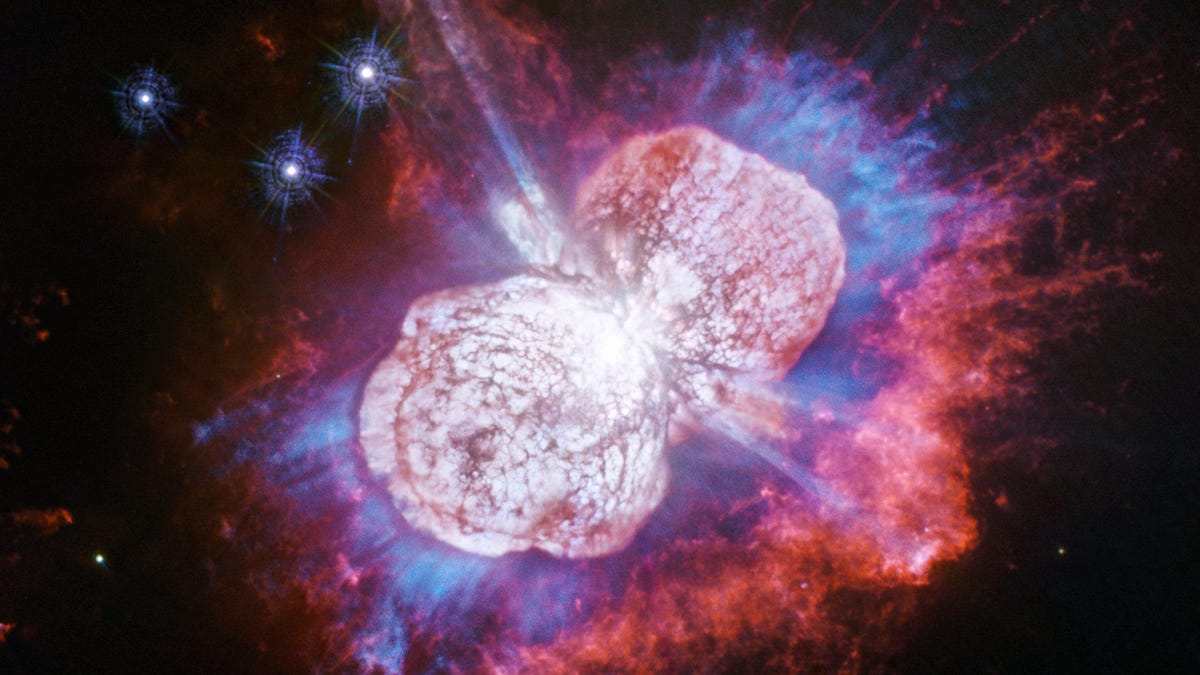For July 4th, NASA's Hubble spots wild star erupting in red, white and blue
NASA celebrates US Independence Day with the stellar fireworks of Eta Carinae.

NASA and ESA's Hubble Space Telescope captured this new view of Eta Carinae.
A nuclear explosion on a mirror. A cell dividing. A close-up of a piece of Nerds candy. A new NASA Hubble Space Telescope image of the star system Eta Carinae could pass for some other things, but it's really a wild view of a celestial powerhouse in action.
"Imagine slow-motion fireworks that started exploding 170 years ago and are still continuing," NASA said.
The space agency released the new image of Eta Carinae Monday to coincide with the upcoming fireworks-happy July 4 holiday in the US. Expanding gases appear in red, white and blue, making it a very on-theme image for Independence Day.
Eta Carinae is part of a double-star system located 7,500 light-years away. It's extremely faint in the night sky these days, but that wasn't always the case. Back in the 1840s, Eta Carinae was the second brightest star in the sky thanks to what's known as the "Great Eruption," a huge outburst of gas and dust.
The European Space Agency, which partners with NASA to operate Hubble, described the historic eruption as "a stellar near-death experience." Scientists suspect Eta Carinae might have had three stars that got tangled up with each other, triggering the two-lobed eruption.
Hubble's ability to see gases in ultraviolet light is giving astronomers clues to how the star's eruption formed and a better look at the debris it is ejecting.
Magnesium gas appears in blue in the image. "A whole new luminous magnesium structure was found in the space between the dusty bipolar bubbles and the outer shock-heated nitrogen-rich filaments," said ESA. This came as a surprise since scientists expected this area to be just empty space.
The Eta Carinae image is the latest in a series of gorgeous views from Hubble, which looks near and far at the wonders of space. Sometimes so far, it can capture the history of the universe in a single image.
Eta Carinae's fate is sealed. It will one day become a supernova, which will be a fitting finale to its epic fireworks show.
Originally published July 1.

